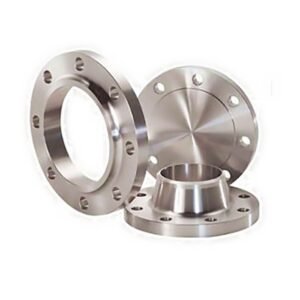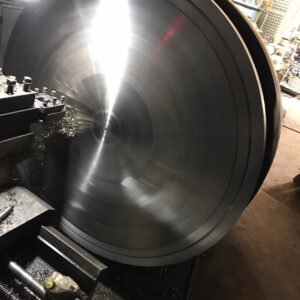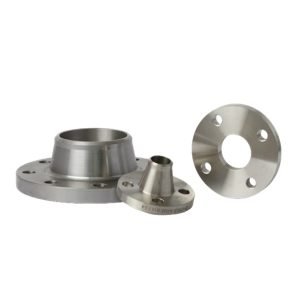ASME B16.5: The Foundation of Flange Ratings
ASME B16.5 is the authoritative standard for pipe flanges and flanged fittings, outlining critical dimensions, pressure-temperature ratings, materials, and testing. It establishes seven primary pressure classes: 150, 300, 400, 600, 900, 1500, and 2500. While each serves a specific purpose, Class 150 and Class 300 flanges are exceptionally common in both industrial and commercial settings due to their versatility.
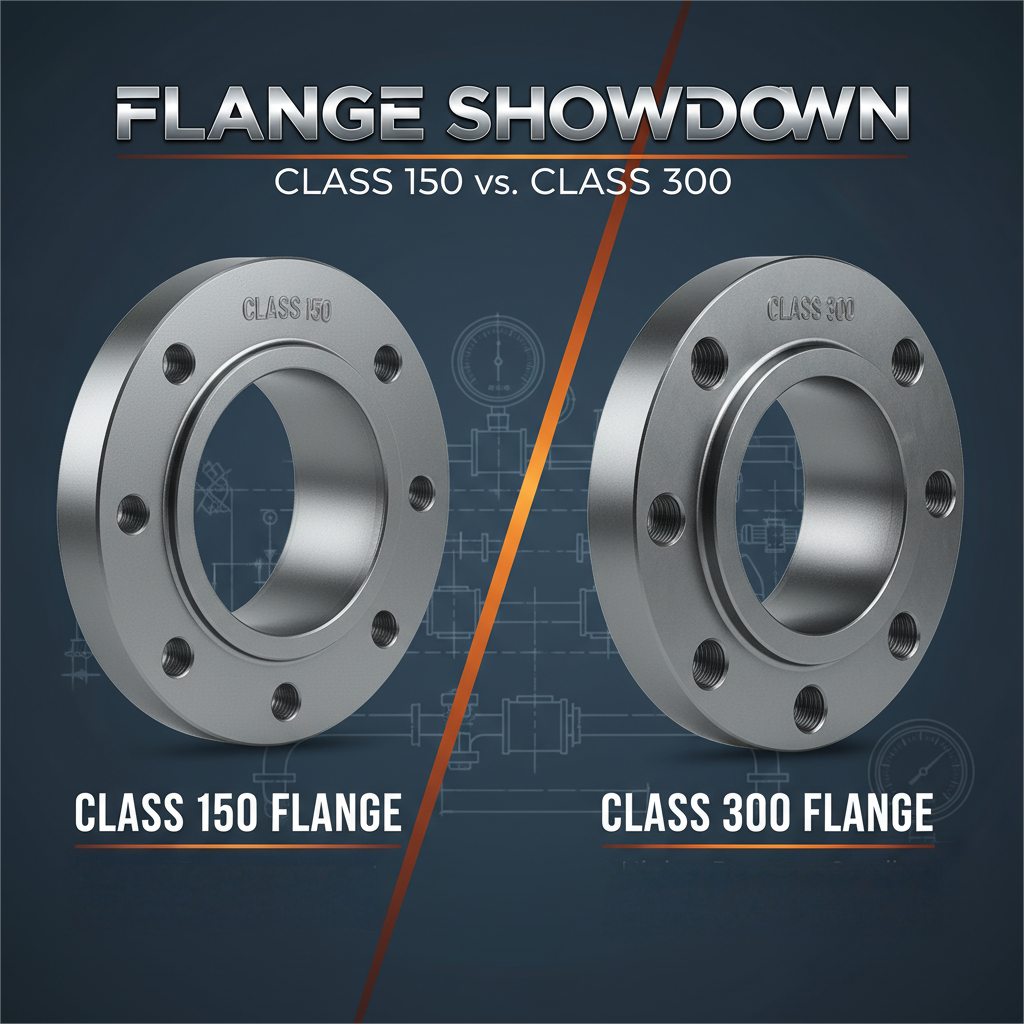
Class 150 Flange vs. Class 300 Flanges
The distinction between Class 150 and Class 300 flanges boils down to their performance capabilities, particularly their ability to handle pressure and temperature.
Strength and Pressure Handling
At the heart of the matter is pressure resilience. Class 300 flanges are engineered for considerably higher pressure tolerances compared to their Class 150 counterparts.
Class 150 Flanges: Typically rated to withstand pressures up to 285 psi.
Class 300 Flanges: Designed for more demanding conditions, handling pressures up to 740 psi.
This significant difference in pressure rating directly impacts where each flange type is best utilized.
Applications
Class 150 Flange Applications
Class 150 flanges are commonly used in low-pressure and moderate-temperature applications. Typical industries and use cases include:
- Water Treatment and Distribution: Perfect for municipal water systems where pressures are controlled.
- HVAC Systems: Commonly found in heating, ventilation, and air conditioning pipelines that don’t experience extreme pressure fluctuations.
- Food and Beverage Processing: Suited for non-corrosive fluid lines within moderate pressure limits.
- Low-Pressure Oil & Gas Segments: Utilized in less critical sections of pipelines where operational pressures remain well below 285 psi.
Class 300 Flange Applications:
Class 300 flanges are used in higher-pressure and higher-temperature environments, such as:
- Petrochemical and Refining: Essential for handling high-pressure steam, various gases, and corrosive chemicals.
- Power Generation Plants: Critical in high-pressure steam lines and boiler feed systems where reliability is paramount.
- Heavy Industrial Process Piping: Employed in chemical plants and manufacturing facilities demanding robust and secure connections for intensive processes.
- High-Pressure Oil & Gas Systems: Indispensable in pipelines transporting crude oil, natural gas, and other energy products under significant pressure.
In essence, industries prioritizing superior sealing integrity and safety under high-pressure conditions will almost always opt for Class 300 flanges.
Dimensional Variations
The differences aren’t just in pressure ratings; they’re physically evident in the flange’s construction.
Wall Thickness: Expect Class 300 flanges to possess noticeably thicker walls and a greater overall mass, directly contributing to their ability to withstand higher forces.
Outside Diameter (OD): Class 300 flanges generally feature a larger outside diameter. For example, a 4-inch Class 150 flange might have an OD of approximately 9 inches, whereas a 4-inch Class 300 flange would be closer to 10.75 inches.
Bolt Circle Diameter & Bolt Holes: To accommodate increased pressure and ensure a secure connection, Class 300 flanges typically have a larger bolt circle diameter and often more, or larger, bolt holes compared to Class 150.
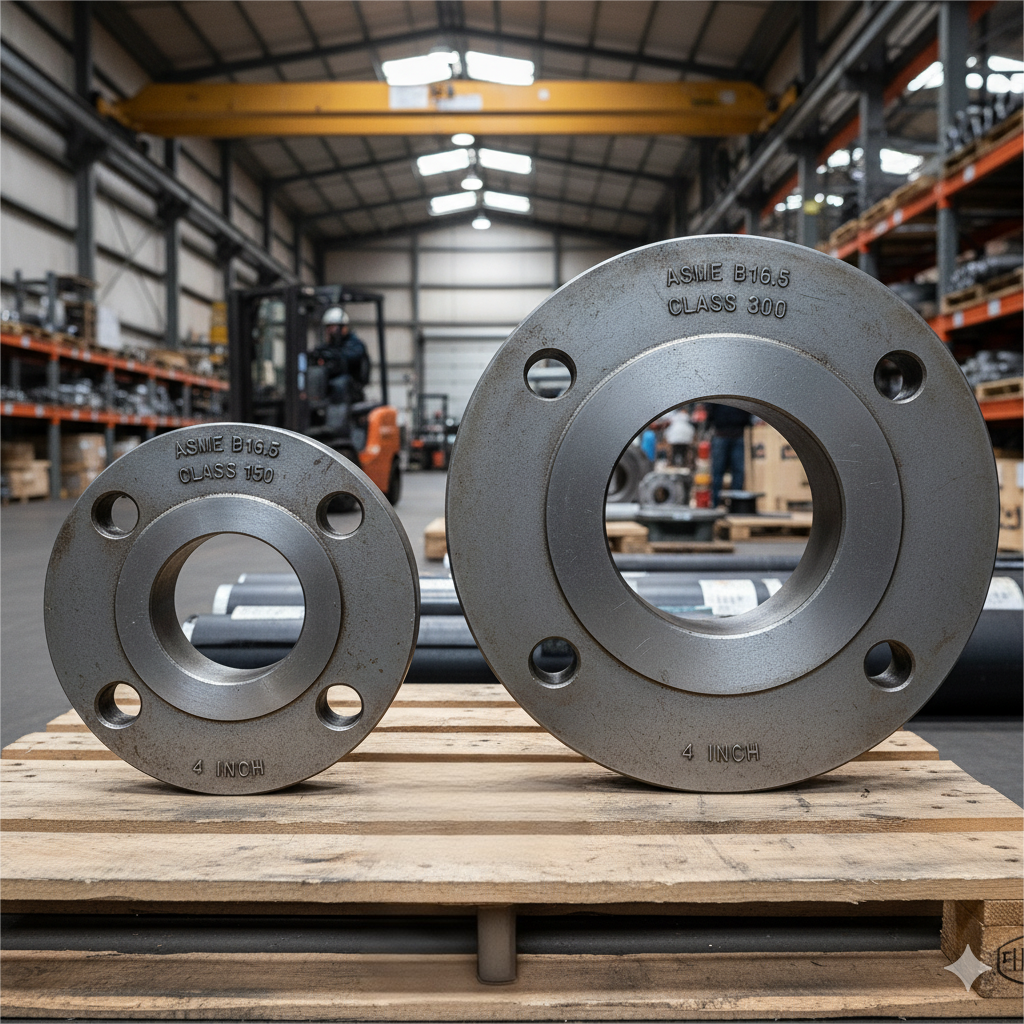
Key Considerations for Flange Selection
Choosing between Class 150 and Class 300 flanges requires a careful evaluation of several critical factors:
System Pressure and Temperature: This is paramount. Always select a flange class that safely exceeds your maximum anticipated operating pressure and temperature.
- Material Compatibility & Corrosion Resistance: Ensure the flange material is compatible with the conveyed fluid and the operating environment to prevent corrosion and premature failure.
- Cost-Effectiveness: While it might seem economical to opt for Class 150, under-speccing can lead to costly failures. Conversely, over-speccing with Class 300 when not necessary can inflate project costs.
- Compliance: Both Class 150 and Class 300 flanges, when manufactured correctly, fully comply with the ANSI/ASME B16.5 standard, ensuring interchangeability and adherence to industry best practices.
By meticulously assessing these points, you can pinpoint the most suitable flange grade for your specific needs, guaranteeing system integrity, safety, and optimal cost management.
Rayoug-Your Trusted Partner for Pipeline System
We’re your one-stop solution for high-quality piping materials, including steel pipes, pipe fittings, and, of course, a comprehensive range of steel flanges. Our extensive in-stock inventory ensures we can meet your urgent requirements swiftly, providing accurate quotes typically within one business day.
Need a quote or have questions?
Contact us today to discuss your project needs.
Call/WhatsApp: +86-18003119682
Email: info@hb-steel.com

